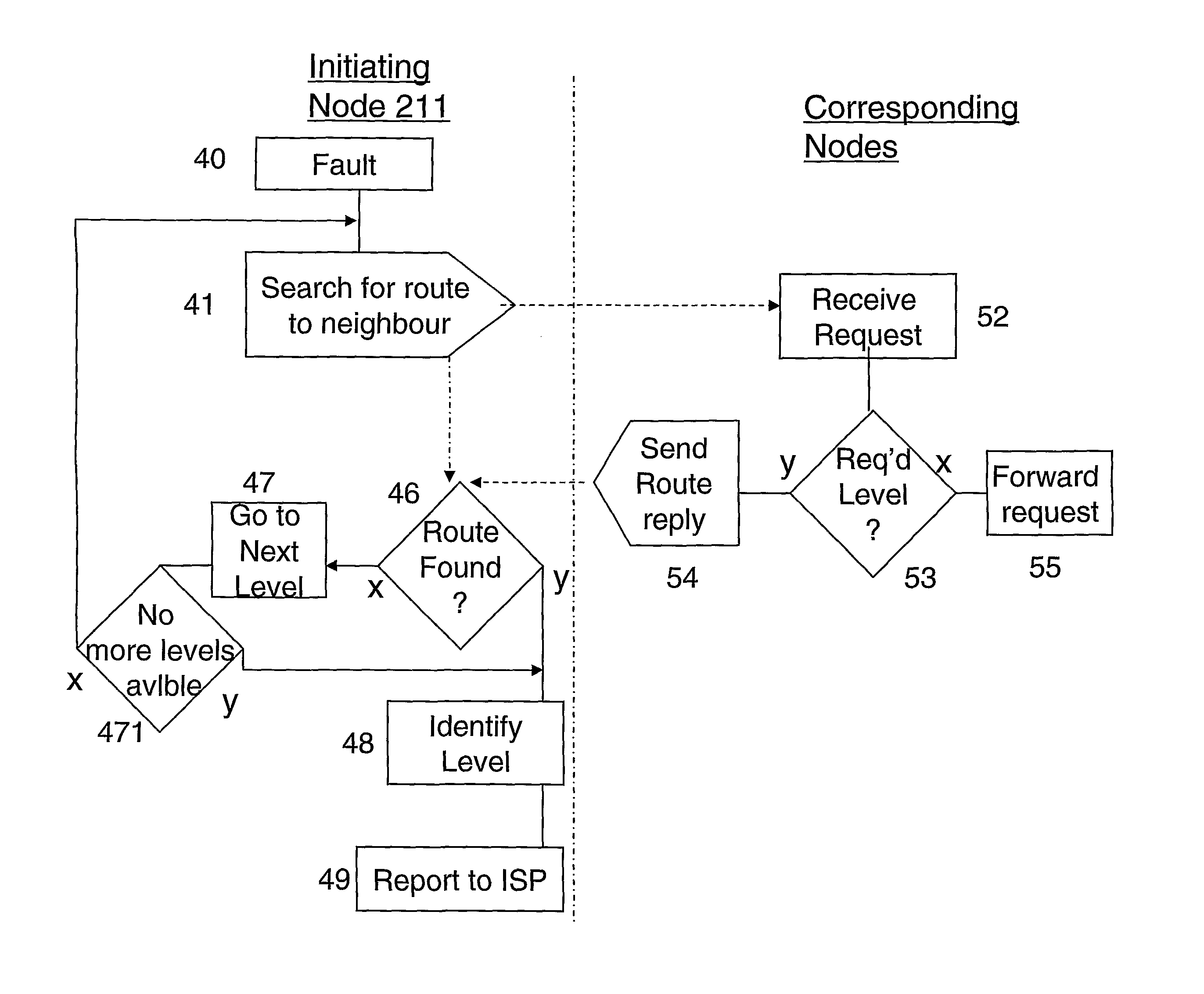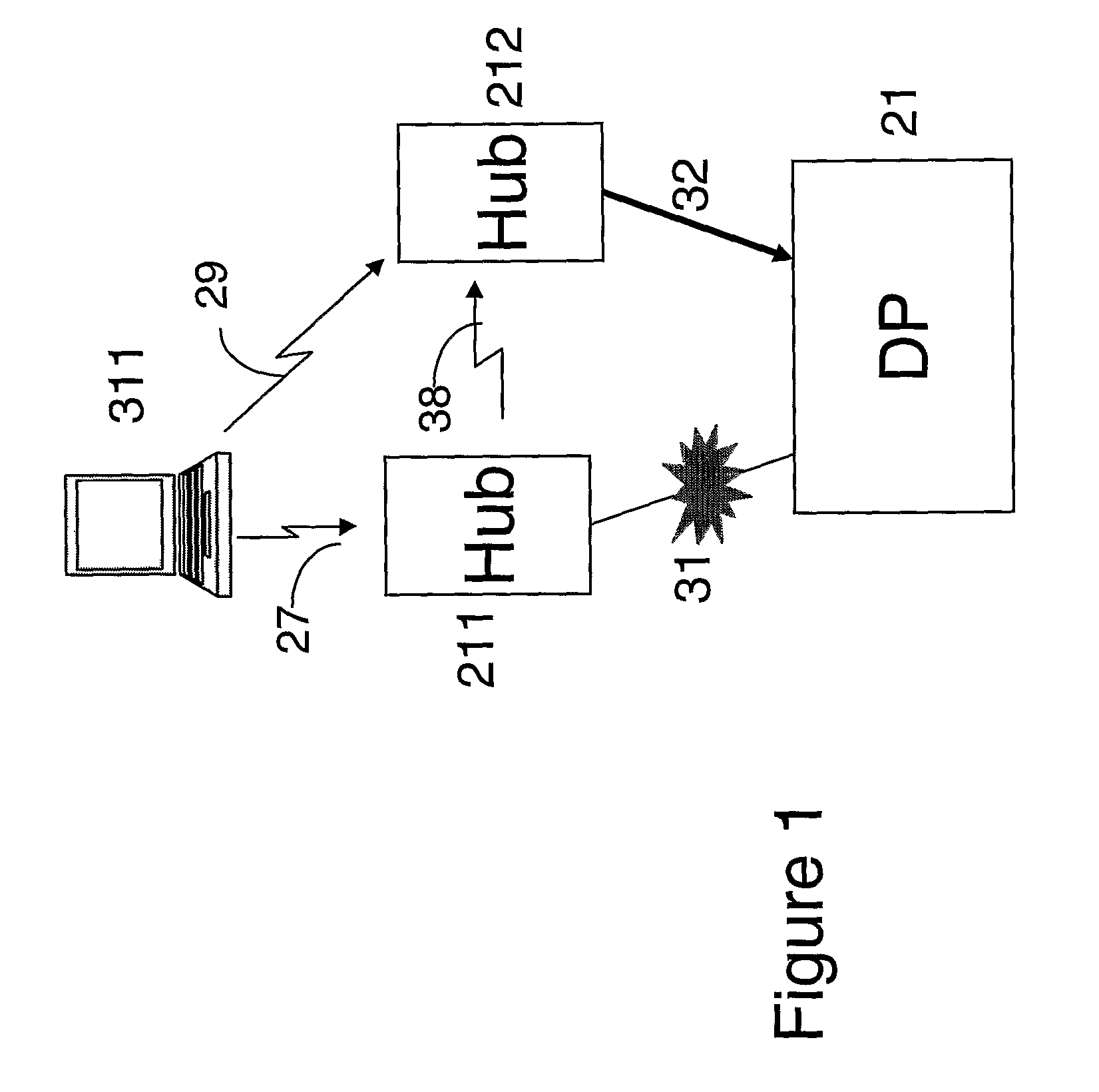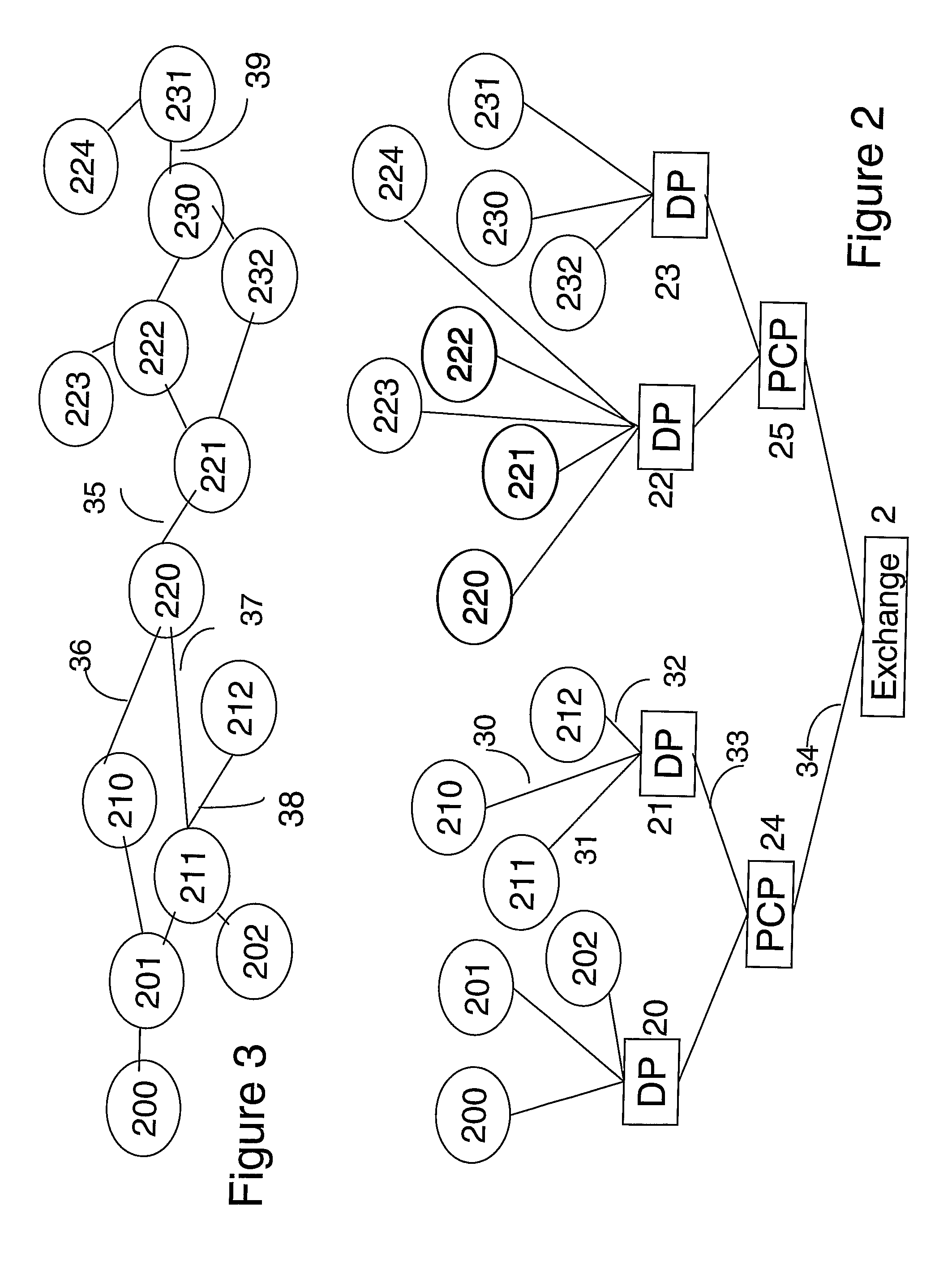Fault location
a technology for fault locations and telecommunications networks, applied in data switching networks, frequency-division multiplexes, instruments, etc., can solve problems such as inability to routinely check all network connections very frequently, total loss of service, and inconvenience for customers, so as to reduce the number of staff needed in customer contact centers to handle fault reports, reduce service downtime, and resolve problems potentially much faster
- Summary
- Abstract
- Description
- Claims
- Application Information
AI Technical Summary
Benefits of technology
Problems solved by technology
Method used
Image
Examples
Embodiment Construction
[0027]FIG. 1 illustrates a computer 311 which can be connected to the network through a WI-FI connection 27 to a wireless hub. However, if the intended hub 211 has lost its connection 31 to the network, the computer 311 may connect to another nearby hub 212 instead. If the first hub 211 is still operational, such a connection might be realized by a wireless connection 38 between the two hubs 211, 212. Alternatively, a direct wireless connection 29 may be established between the terminal 311 and the neighboring hub 212.
[0028]FIG. 2 illustrates a plurality of computing devices 200-202, 210-212, 220-224, 230-232, of which the hub 211 depicted in FIG. 1 is a member, each operating as a communication node (typically a WI-FI access point) connected to the Internet, e.g. via a broadband connection to an exchange 2. The connections follow a branched structure. For example, as already described with reference to FIG. 1, nodes 211, 212 are each connected by respective cables 31, 32 to a distr...
PUM
 Login to View More
Login to View More Abstract
Description
Claims
Application Information
 Login to View More
Login to View More - R&D
- Intellectual Property
- Life Sciences
- Materials
- Tech Scout
- Unparalleled Data Quality
- Higher Quality Content
- 60% Fewer Hallucinations
Browse by: Latest US Patents, China's latest patents, Technical Efficacy Thesaurus, Application Domain, Technology Topic, Popular Technical Reports.
© 2025 PatSnap. All rights reserved.Legal|Privacy policy|Modern Slavery Act Transparency Statement|Sitemap|About US| Contact US: help@patsnap.com



